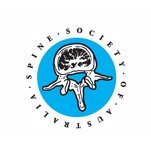Lumbar Spinal Fusion
Spinal fusion is a surgical procedure used to correct problems with the small bones of the spine (vertebrae). It is essentially a "welding" process. The basic idea is to fuse together the painful vertebrae so that they heal into a single, solid bone.
Spine surgery is usually recommended only when your doctor can pinpoint the source of your pain. To do this, your doctor may use imaging tests, such as x-rays, computed tomography (CT), and magnetic resonance imaging (MRI) scans.
Spinal fusion may relieve symptoms of many back conditions, including:
- Degenerative disk disease
- Spondylolisthesis
- Spinal stenosis
- Scoliosis
- Fracture
- Infection
- Tumour
Understanding how your spine works will help you better understand spinal fusion.
Description
Spinal fusion eliminates motion between vertebrae. It also prevents the stretching of nerves and surrounding ligaments and muscles. It is an option when motion is the source of pain, such as movement that occurs in a part of the spine that is arthritic. The theory is if the painful vertebrae do not move, they should not hurt.
If you have leg pain in addition to back pain, your surgeon may also perform a decompression (laminectomy). This procedure involves removing bone and diseased tissues that can put pressure on spinal nerves.
Fusion will take away some spinal flexibility, but most spinal fusions involve only small segments of the spine and do not limit motion very much.
Procedure
Lumbar spinal fusion has been performed for decades. There are several different techniques that may be used to fuse the spine. There are also different "approaches" your surgeon can take for your procedure.
Your surgeon may approach your spine from the front. This is an anterior approach and requires an incision in the lower abdomen. (See related article "Anterior Lumbar Interbody Fusion.")
A posterior approach is done from your back. Or your surgeon may approach your spine from the side, called a lateral approach. (See related articles "Posterior Lumbar Interbody Fusion and Transforaminal Interbody Fusion.")
Minimally invasive techniques have also been developed. These allow fusions to be performed with smaller incisions.
The right procedure for you will depend on the nature and location of your disease.
Bone Grafting
All spinal fusions use some type of bone material, called a bone graft, to help promote the fusion. Generally, small pieces of bone are placed into the space between the vertebrae to be fused.
A bone graft is primarily used to stimulate bone healing. It increases bone production and helps the vertebrae heal together into a solid bone. Sometimes larger, solid pieces are used to provide immediate structural support to the vertebrae.
In the past, a bone graft harvested from the patient's hip was the only option for fusing the vertebrae. This type of graft is called an autograft. Harvesting a bone graft requires an additional incision during the operation. It lengthens surgery and can cause increased pain after the operation.

Most autografts are harvested from the iliac crest of the hip.
One alternative to harvesting a bone graft is an allograft, which is cadaver bone. An allograft is typically acquired through a bone bank.
Today, several artificial bone graft materials have also been developed.
Demineralized bone matrices (DBMs). Calcium is removed from cadaver bone to create DBMs. Without the mineral, the bone can be changed into a putty or gel-like consistency. DBMs are usually combined with other grafts, and may contain proteins that help in bone healing.
Bone morphogenetic proteins (BMPs). These very powerful synthetic bone-forming proteins promote a solid fusion. They are approved by the U.S. Food and Drug Administration for use in the spine in certain situations. Autografts may not be needed when BMPs are used.
Ceramics. Synthetic calcium/phosphate materials are similar in shape and consistency to autograft bone.
Your surgeon will discuss with you the type of bone graft material that will work best for your condition and procedure.
Immobilization
After bone grafting, the vertebrae need to be held together to help the fusion progress. Your surgeon may suggest that you wear a brace.
In many cases, surgeons will use plates, screws, and rods to help hold the spine still. This is called internal fixation, and may increase the rate of successful healing. With the added stability from internal fixation, most patients can move earlier after surgery.
Complications
As with any operation, there are potential risks associated with spinal fusions. It is important to discuss these risks with your surgeon before your procedure.
- Antibiotics are regularly given to the patient before, during, and often after surgery to lessen the risk of infections.
- A certain amount of bleeding is expected, but this is not typically significant.
- Pain at graft site. A small percentage of patients will experience persistent pain at the bone graft site.
- Recurring symptoms. Some patients may experience a recurrence of their original symptoms.
- Patients who smoke are more likely to develop a Pseudarthrosis. This is a condition where there is not enough bone formation. If this occurs, a second surgery may be needed to obtain a solid fusion.
- Nerve damage. It is possible that the nerves or blood vessels may be injured during these operations. These complications are very rare.
- Blood clots. Another uncommon complication is the formation of blood clots in the legs. These pose significant danger if they break off and travel to the lungs.
Warning Signs
It is important that you carefully follow any instructions from your doctor relating to warning signs of blood clots and infection. These complications are most likely to occur during the first few weeks after surgery.
Warning signs of possible blood clots include the following:
- Swelling in the calf, ankle or foot
- Tenderness or redness, which may extend above or below the knee
- Pain in the calf
Occasionally, a blood clot will travel through the blood stream and may settle in your lungs. If this happens, you may experience a sudden chest pain and shortness of breath or cough. If you experience any of these symptoms, you should notify your doctor immediately. If you cannot reach your doctor, someone should take you to the hospital emergency room or call 911. Infection following spine surgery occurs very rarely. Warning signs of infection include:
- Redness, tenderness, and swelling around the wound edges
- Drainage from the wound
- Pain or tenderness
- Shaking chills
- Elevated temperature, usually above 100°F if taken with an oral thermometer
If any of these symptoms occur, you should contact your doctor or go to the nearest emergency room immediately.
Recovery
Pain Management
After surgery, you will feel some pain. This is a natural part of the healing process. Your doctor and nurses will work to reduce your pain, which can help you recover from surgery faster.
Medications are often prescribed for short-term pain relief after surgery. Many types of medicines are available to help manage pain, including opioids, non-steroidal anti-inflammatory drugs (NSAIDs), and local anaesthetics. Your doctor may use a combination of these medications to improve pain relief, as well as minimize the need for opioids.
Be aware that although opioids help relieve pain after surgery, they are a narcotic and can be addictive. Opioid dependency and overdose has become a critical public health issue in the U.S. It is important to use opioids only as directed by your doctor. As soon as your pain begins to improve, stop taking opioids. Talk to your doctor if your pain has not begun to improve within a few days of your surgery.
Rehabilitation
The fusion process takes time. It may be several months before the bone is solid, although your comfort level will often improve much faster. During this healing time, the fused spine must be kept in proper alignment. You will be taught how to move properly, reposition, sit, stand, and walk.
Your symptoms will gradually improve, so will your activity level. Right after your operation, your doctor may recommend only light activity, like walking. As you regain strength, you will be able to slowly increase your activity level.
Maintaining a healthy lifestyle and following your doctor's instructions will greatly increase your chances for a successful outcome.
New Research
Recent research has focused on developing new bone graft materials that may act as safe and effective substitutes for a patient's own tissue.
In addition, total disk replacements and other motion-sparing techniques have recently been proposed as alternatives to spinal fusion for the treatment of low back and leg symptoms.
Lumbar Spinal Fusion
Table of Contents

Introduction
One of the main goals of any surgical procedure on the skeletal system is to stop the pain caused by joints that have worn out over time-degenerative joints. One of the most reliable ways to reduce pain from degeneration is to fuse the joint together. A fusion is an operation where two bones, usually separated by a joint, can grow together into one bone. The medical term for this type of fusion procedure is arthrodesis.
Spinal fusion has been used for many years to treat painful conditions in the lumbar spine. Over the past decade, there have been dramatic improvements in the way that spinal fusion operations are performed. One major improvement has been the development of fixation devices.
Anatomy

In order to understand your symptoms and treatment choices, it is helpful to start with a basic understanding of the anatomy of your low back. This includes becoming familiar with the various
Rationale
Only when all other conservative treatments have failed will your doctor suggest fusion surgery.
Several back conditions may require a spinal fusion, including
- degenerative disc disease
- spinal instability
- spine curvature
- spondylolysis and spondylolisthesis
Degenerative Disc Disease
Degeneration of the discs between one or more vertebrae may require a spinal fusion of the vertebrae on both sides of the degenerative disc. The intervertebral discs are flat, round "cushions" that act as shock absorbers between each vertebra in the spine. The disc allows motion to occur between each vertebra. Removing a degenerated disc and allowing the two vertebrae to fuse together can reduce pain.
Spinal Instability
Each spinal segment is like a well-tuned part of a machine. All the parts should work together to allow weight bearing, movement, and support. When one segment deteriorates to the point of instability, it can lead to localized pain and difficulties.
Segmental instability occurs when there is too much movement between two vertebrae. The excess movement of the vertebrae can cause pinching or irritation of nerve roots. It can also cause too much pressure on the facet joints, leading to inflammation. It can cause muscle spasms as the para-spinal muscles try to stop the spinal segment from moving too much. The instability eventually results in faster degeneration in this area of the spine.
Spine Curvature
Lumbar fusion may be needed for conditions such as scoliosis and kyphosis, where the spine has an abnormal curve. These spine deformities may result from congenital or degenerative spine conditions. A lumbar fusion may be suggested to stabilize the spine and correct the problem.
Spondylolysis and Spondylolisthesis
Spondylolisthesis is the term used to describe when one vertebra slips forward on the one below it. This usually occurs because there is a spondylolysis (defect) in the vertebra on top. There are two main parts of the spine that keep each vertebra aligned-the disc and the facet joints. When a spondylolisthesis occurs, the facet joint can no longer hold the vertebra back. The intervertebral disc may slowly stretch under the increased stress and allow the upper vertebra to slide forward. A fusion may be used for both conditions to stop motion in the problem vertebrae.
Procedure
During a spinal fusion, a bone graft is used to join two or more vertebrae. The vertebrae grow together during the healing process, creating a solid piece of bone. The bone graft helps the vertebrae heal together, or fuse. The bone graft is usually taken from the pelvis at the time of surgery. However, some surgeons prefer to use bone graft from a bone bank (called allograft). Your surgeon can use an anterior (from the front) approach, a posterior (from the back) approach, or a combined approach to lumbar fusion surgery.
Anterior Approach
In some cases, it may be best to consider placing the bone graft between the vertebral bodies. The anterior interbody approach allows the surgeon to remove the intervertebral disc from the front and place the bone graft between the vertebrae.
This operation is usually done by making an incision in the abdomen, just above the pelvic bone. The organs in the abdomen, such as the intestines, kidneys, and blood vessels, are moved to the side to allow the surgeon to see the front of the spine. The surgeon then locates the problem disc and removes it. Bone graft is placed into the area between the vertebrae where the disc has been removed.
Posterior Approach
The posterior approach is done from the back of the patient. This approach can be just a fusion of the vertebral bones or it can include removal of the problem disc. If the disc is removed, it is replaced with a bone graft. The surgeon moves the spinal nerves to one side and inserts the bone graft between the vertebral bodies. This is called a posterior lumbar interbody fusion.
With a posterior approach, an incision is made in the middle of the lower back over the area of the spine that is going to be fused. The muscles are moved to the side so that the surgeon can see the back surface of the vertebrae. Once the spine is visible, the lamina of the vertebra is removed to take pressure off the dura and nerve roots. This allows the surgeon to see areas of pressure on the nerve roots caused by bone spurs, a bulging disc, or thickening of the ligaments. The surgeon can remove or trim these structures to relieve the pressure on the nerves. Once the surgeon is satisfied that all pressure has been removed from the nerves, a fusion is performed. When operating from the backside of the spine, the most common method of performing a spinal fusion is to place strips of bone graft over the back surface of the vertebrae.
Combined Approach
Working between the vertebrae from the back of the patient has limitations. The surgeon is limited by the fact that the spinal nerves are constantly in the way. These nerves can only be moved a slight amount to either side. This limits the ability to see the area. There is also limited room to use instruments and place implants. For these reasons, many surgeons prefer to make a separate incision in the abdomen and perform two operations-one from the front of the spine and one from the back. The two operations are usually performed at the same time, but they may be done several days apart.
Instrumented
In the past, spinal fusions of the lumbar spine were performed without any internal fixation. The surgeon simply roughed up the bone, placed bone graft material around the vertebrae, and hoped the bones would fuse. Sometimes, patients were placed in a body cast to try to hold the vertebrae still while healing. The patient was lucky to have a 70 percent chance of successful fusion.
Surgery of the spine continues to be a challenging and difficult area. The vertebrae are small, so there is not much room to place small instruments. Also, many nerves can get in the way of putting screws into the vertebral body. And a large amount of stress is put on the lower back, so finding a metal device that can hold the bones together can be difficult. Over the past two decades, some very inventive devices have been designed that have changed the way surgeons perform spinal fusions.
Pedicle Screws and Rods
The surgeon may use some type of metal screws, plates, and rods to hold the vertebrae in place while the spine fusion heals. Designed to stabilize and hold the bones together while the fusion heals, these devices have greatly improved the success rate of fusion in the lower back.
Intervertebral Cages
A new type of device, called an intervertebral fusion cage, can be used to perform a spinal fusion between two or more vertebrae. These implants are designed to spread the two vertebrae apart while the fusion heals.
Complications
Like all surgical procedures, operations on the spine may have complications. Because the surgeon is operating around the spinal cord and nerves, back operations are always considered extremely delicate and potentially dangerous. You should take time to review the risks associated with spine surgery with your doctor. Make sure you are comfortable with both the risks and the benefits of the procedure planned for your treatment.
Rehabilitation
A minimum of three months is needed for the bones to fuse together and become solid. Yet the bone graft will continue to mature for one to two years. Your doctor may have you wear a rigid brace for up to three months to keep your spine still and make sure the bones fuse. You may not require a rigid brace after fusion with instrumentation.
Most patients can return home when their medical condition is stabilized, usually within one week after fusion surgery. Limit your activities to avoid doing too much too soon. Avoid bending, lifting, twisting, and driving for at least six weeks.
Physical Therapy
Your doctor may have you attend physical therapy beginning a minimum of six weeks after surgery. A well-rounded rehabilitation program assists in calming pain and inflammation, improving your mobility and strength, and helping you do your daily activities with greater ease and ability. Therapy sessions may be scheduled up to three times each week for eight to 12 weeks.
The goals of physical therapy are to help you
- Learn ways to manage your condition and control symptoms
- Improve flexibility and core strength
- Learn correct posture and body movements to protect the fusion
- Return to work safely













